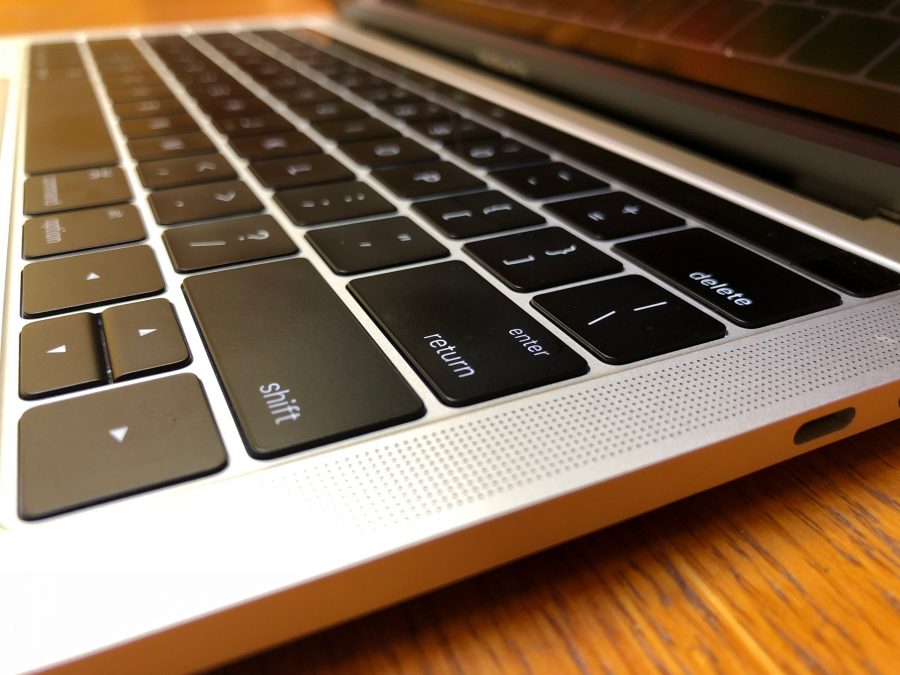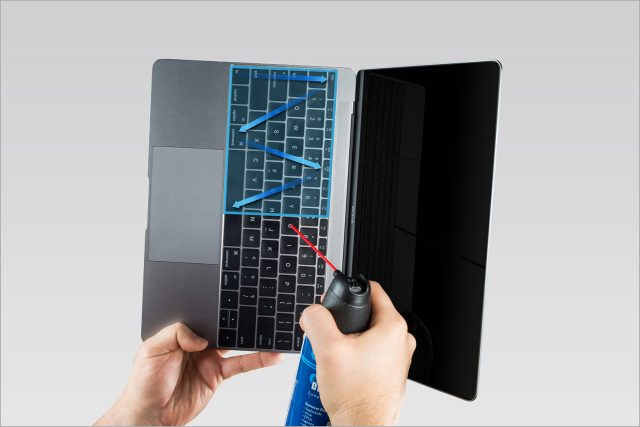
Photo by Adam Engst
Apple Announces Service Program for Butterfly-Switch Keyboards
Apple has announced a service program for all MacBook and MacBook Pro laptops with butterfly-switch keyboards. The announcement lists every model that’s covered, but the short answer is “every Mac laptop to date with a USB-C port,” meaning 12-inch MacBooks since 2015 and MacBook Pros since 2016.
Many people dislike the feel of the butterfly keyboard, with its minimal key travel, but the problem here is how much more susceptible they are to dust particles than those in previous Mac laptops, leading to more sticky and dead keys. AppleInsider recently calculated that the 2016 MacBook Pro butterfly keyboards fail twice as frequently as those in older models.
Combine that with a possible $700 charge for repair outside of warranty and AppleCare—since the keyboard is built into the MacBook and MacBook Pro bottom case and can’t be swapped out—and it’s little wonder that there is a lawsuit in progress (see “Class-Action Suit Filed against Apple for MacBook Butterfly Keyboards,” 16 May 2018).
You can get an affected laptop fixed at an Apple Store, an Apple Authorized Service Provider, or by sending it to Apple. Those who have already paid for a repair may be able to get a refund from Apple.
Note that your keyboard is covered for 4 years after your laptop’s initial purchase, and if your laptop has other damage that prevents a keyboard repair, that’s not included in the free service. If you purchased AppleCare coverage, this repair program extends coverage for just 1 year.
We’ve had mediocre results with MacBook keyboard reliability here at TidBITS. Agen Schmitz lost his H key earlier this week (he’s now known as Agen Scmitz) and is looking forward to a fix. Josh Centers suffered a stuck Tab key, though he fixed it by cleaning the space around the key with a toothpick. And my Space bar and Slash key started acting wonky a few months ago: subsequently, I had a great interaction with the local Apple Store. They did the ridiculously odd keyboard cleaning for me in an hour, supplementing the standard cleaning instructions with proprietary tools, and also cleaned my MacBook Pro’s exterior so it looked like it was fresh out of the box. I’ve had no trouble since, but granted, I shouldn’t have had any in the first place.
Even if the repair is free, it may still take a few days to get your MacBook or MacBook Pro fixed, so try a compressed-air cleaning first or an Apple Store visit if you have a similar early warning.

A while ago I noticed my lower case c often didn’t get into displayed text; I hadn’t sorted out if my weak 4th finger, non-dominant hand was the cause or the butterfly key. Still haven’t sorted that out. Likely now have to pay more attention to rate of dropped letters on my butterfly keyboard MacBookPro (TouchBar) versus older desktop iMac.
So they’ll replace the keyboard with… what? The exact same sort of keyboard? The problem is with the design, so changing the keyboard will just relieve the problem for a short time.
I’ve gone through four cans of compressed air in the year that I’ve had my MacBook 12"; changing the keyboard will start be from scratch, but I would expect the same problem would recur within a month or two.
Seems like the right thing to do. It’s clear that the keyboard simply isn’t as reliable as earlier keyboards (the key travel & feel is separate preference issue, I think).
Well, but “less reliable” means that the failure rate is 10-15%, which means that a replacement keyboard should, we hope, be in the 85% side, where things are reliable. Not all of them break.
I am glad Apple owned up to the problem, though I wish they could be faster. At first the solution proposed was to tip your computer up at an angle and use a can of air made no sense to me. Then I realized the angle is to allow bits to be blown out of the keys and to fall away from the keyboard. Blowing out when the computer is flat would just move the crumbs around. So the angle makes sense now.
Daniel, I switched to the Dvorak keyboard layout 20 years ago, and strongly recommend it. Far easier on weaker fingers. it took me about 3 months to learn (which admittedly were frustrating as hell).
Another late update: my left command key is on the fritz, and another Apple cleaning hasn’t helped—but the launch of the replacement program means a one-week wait without my MacBook Pro while it’s turned around. That’s a long time to switch back to my Air. Likely to put up with it until it’s a one-day turnaround, or until it breaks entirely, whichever comes first.
Rumor has it that replacement keyboards get the 2017 model, not the 2018. Seriously considering trading in my 2016 13" for a 2018 15" if I can budget it.